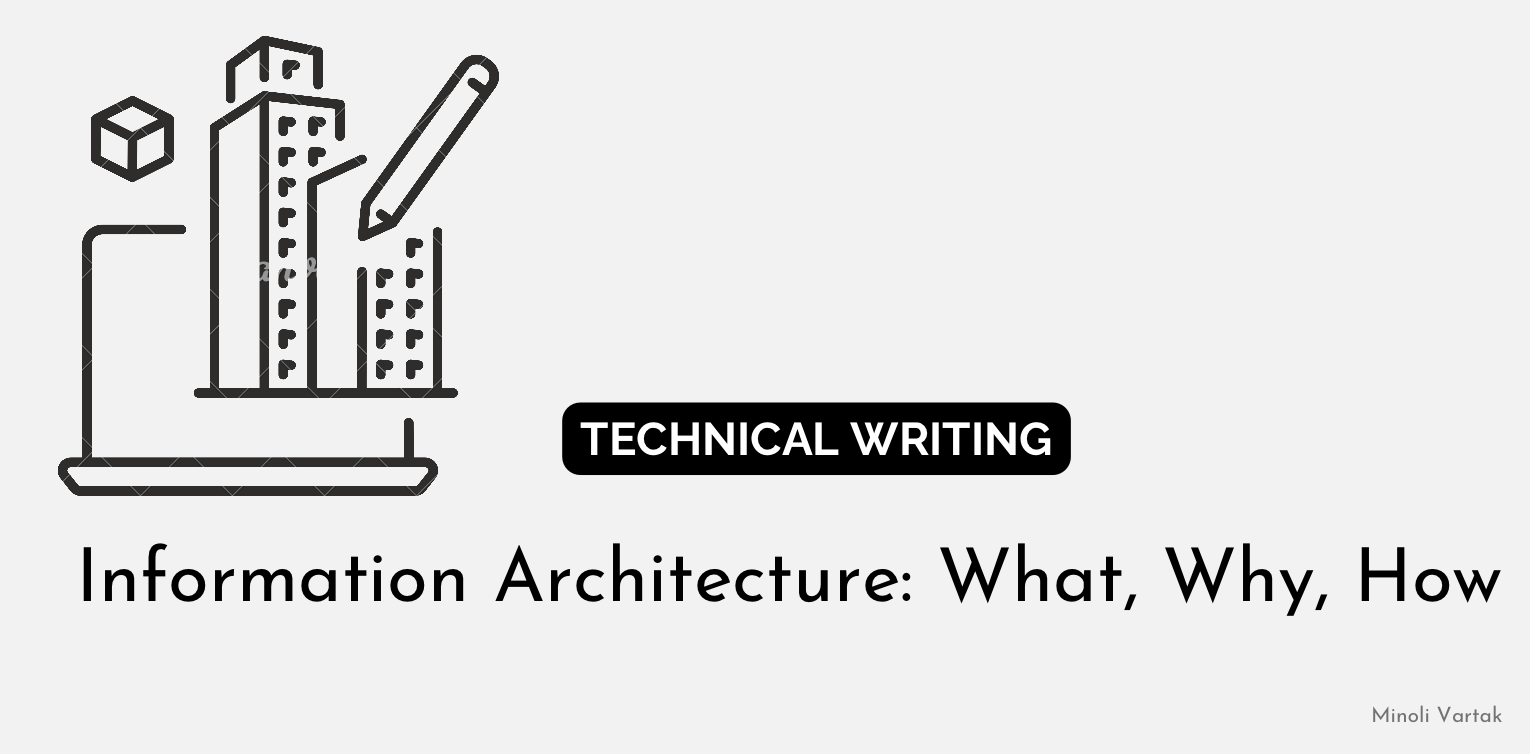Information architecture (IA) is a day-to-day life activity of a technical writer. When working on any documentation, a technical writer has to consider IA to organize information for viewers to consume the content easily.
In this blog, let's discuss what exactly is IA, why it is important, and how to get started.
What is Information Architecture?
Information architecture (IA) is a way of organizing and structuring content in such a way that your viewers can consume and understand the content quickly.
It involves dividing content into smaller chunks known as sections, arranging the flow of sections, and displaying them in a sequential manner on the documentation site.
Well, technical writing is not about good grammar and perfect sentence formation. It also involves thinking of a better way to structure the information.
But before jumping to do a better IA of the content, it’s crucial to know about the content. Unless the writers know the content in depth, they will never be able to implement the best IA structure on their documentation sites.
It’s similar to organizing a pantry. Like we can’t place vegetables in the spices cabinet. Similarly, we cannot put content in a random manner.
Let’s dig into the importance of IA in the following section.
Why is Information Architecture important?
Let’s understand this better with the following example:
You are at a mall and looking for milk and curd. As milk and curd are both dairy products, they should be placed in a dedicated section. However, this mall places milk on the first floor, and curd on the second floor.
How tiring would it be!
How tiring would it be!
It will frustrate you and you might have to prepare yourself for the chaos the next time you visit that mall. Or you would never visit the mall.
If the mall had created a dairy section with milk and curd next in that section, it would have saved your time and it has ensured your next visit to that mall.
You can relate this example everywhere. Let it be some blog or documentation sites, unless the content follows a good structure, it would be difficult to maintain and engage viewers.
If a particular topic is divided into chunks and arranged properly at the right place, it would ease the user’s journey on your documentation site.
Let’s sum it up in the following points:
- Better visibility to subtopics of a main topic
- Quick overview of the topic
- Better navigation and layout
How to get started with Information Architecture?
Now that you have the idea of IA and its importance, let’s discuss a few tips on getting started.
Tip 1: Identify your readers
Let’s say would it work if I hand you a pack of wafers while you were asking for a pack of almonds?
Of course, not!
Of course, not!
Similarly, it’s important for you to identify your readers who are going to consume your content. Unless you identify the readers, you will struggle to maintain a good IA.
If your readers are non-technical, it’s probably not a good idea to start an introduction with technical terms. And if you do, you need to ensure that you provide references to the technical topics.
Tip 2: Categorize your content
Imagine you are a vegan sustaining on almond milk. You’re visiting a mall and going to the dairy section. But no! You’re seeing all types of milks - cow, buffalo, oats, almond, soy, in a single fridge. But think of how convenient it would be if there was a separate fridge for vegan consumers.
Similarly, though you have plenty of content available with you, you need to categorize it. The typical types of categories are conceptual guides, procedural guides, troubleshooting guides, and FAQs.
Tip 3: Follow a style guide
Your tomato soup is going to be miserable if you don’t correct the amount of ingredients and you don’t follow a particular procedure to cook it.
Just like that, when writing content you must follow a style guide. A style guide helps you follow a pattern of sentence construction that lets you build a correct flow to achieve proper information architecture.
Tip 4: Be open to feedback
When working on any piece of content, it's evident that you will receive both appreciation and criticism. As a technical writer, being open to feedback goes a long way.
Even after adding all the ingredients to your tomato soup perfectly, there will still be room for improvement, considering the varied tastes of your customers. Some might prefer it spicy, while others might like it sour.
Similarly, in terms of information architecture, users come from diverse backgrounds and will have their unique journey through your documentation. Be prepared to understand how users navigate your documentation and continuously improve its information architecture.
Conclusion
In this blog,we learned about what information architecture is, what does it matter, and how to get started on it. It's important to note that information architecture may differ from one organization to another, yet the fundamental principle remains the same: enhancing the user's experience while navigating through your documentation.
Beyond the topics covered in this blog, you are encouraged to devise your own strategies for streamlining the user's journey.


